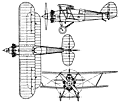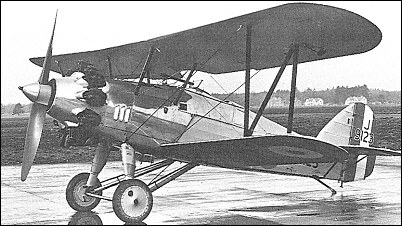|
| Precursor of the Hornet and Fury, this experimental
single-seat interceptor fighter designed by Sydney
Camm to meet the requirements of Specification
F.20/27 was flown in August 1928 with a 450hp Bristol
Jupiter VII radial. Of metal construction with sharply
staggered single-bay wings and a twin-Vickers gun
armament, the prototype was re-engined with a 520hp
Mercury VI in May 1930. It demonstrated what was, for
a fighter fitted with an uncowled radial engine, a very
creditable maximum level speed of 325km/h. By this time, however, the F.20/27 specification
had prompted Hawker to initiate development
of a more advanced fighter as a private venture, and
this, owing much to its predecessor, was to emerge as
the Hornet in 1929.
 | A three-view drawing (1302 x 1116) |
| MODEL | F.20/27 (Mercury-engined) |
| WEIGHTS |
| Take-off weight | 1429 kg | 3150 lb |
| Empty weight | 977 kg | 2154 lb |
| DIMENSIONS |
| Wingspan | 9.14 m | 30 ft 0 in |
| Length | 7.17 m | 24 ft 6 in |
| Height | 2.87 m | 9 ft 5 in |
| Wing area | 21.18 m2 | 227.98 sq ft |
| PERFORMANCE |
| Max. speed | 325 km/h | 202 mph |
| Redherringz, e-mail, 24.01.2014 20:18 I've not seen a real one but again where we used to live we saw a replica my sons waved and it did a few impromptu aerobatics. I may have a few b&w photos somewhere reply |
|
Do you have any comments?
|
| 
COMPANY
PROFILE
All the World's Rotorcraft
|







